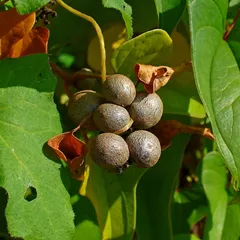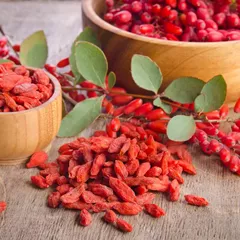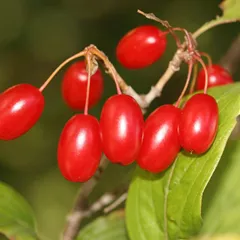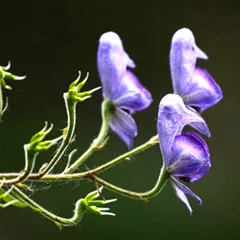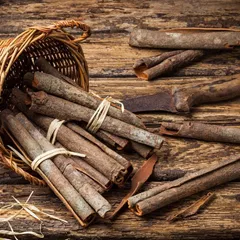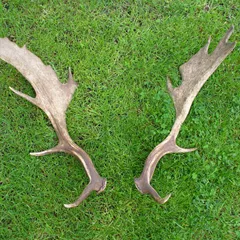Dang Gui Di Huang Yin
Dang Gui Di Huang Yin
Chinese: 当归地黄饮
Pinyin: Dāng Guī Dì Huáng Yǐn
Other names: Angelica sinensis-Rehmannia Decoction, Tangkuei and Rehmannia Decoction, Dong quai and Rehmannia Decoction,
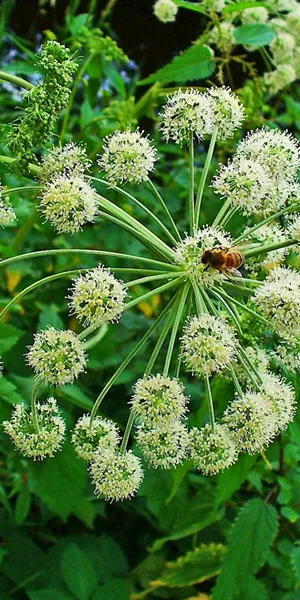
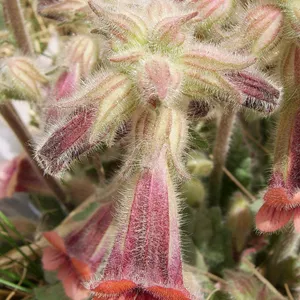
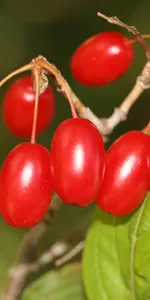
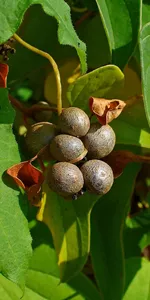
Dang Gui Di Huang Yin
Dang Gui Di Huang Yin
Chinese: 当归地黄饮
Pinyin: Dāng Guī Dì Huáng Yǐn
Other names: Angelica sinensis-Rehmannia Decoction, Tangkuei and Rehmannia Decoction, Dong quai and Rehmannia Decoction,
Number of ingredients: 7 herbs
Formula category: Formulas that tonify Blood
Mother formula: Liu Wei Di Huang Wan
Conditions for which it may be prescribed: Menopausal syndromeScanty menstruationAbsence of menstruation
- Nourishes Blood
- Tonifies Kidney and Liver Yin
- Regulates the menstrual cycle
Source date: 1640 AD
Source book: Collected Treatises of [Zhang] Jing Yue
The information provided here is not a replacement for a doctor. You shouldn't use it for the purpose of self-diagnosing or self-medicating but rather so you can have a more informed discussion with a professional TCM practitioner.
Dang Gui Di Huang Yin is a 7-ingredient Chinese Medicine formula with Dong Quai (Dang Gui) and Prepared Rehmannia (Shu Di huang) as principal ingredients.
Invented in 1640 AD, it belongs to the category of formulas that tonify Blood. Its main actions are: 1) nourishes Blood and 2) tonifies Kidney and Liver Yin.
In Chinese Medicine health conditions are thought to arise due to "disharmonies" in the body as a system. These disharmonies are called "patterns" and the very purpose of herbal formulas is to fight them in order to restore the body's harmony.
In this case Dang Gui Di Huang Yin is used by TCM practitioners to fight patterns like Kidney Yin Deficiency, Kidney-Deficiency or Liver Blood and Kidney Essence Deficiency. From a Western Medicine standpoint, such patterns can give rise to a range of conditions such as menopausal syndrome, scanty menstruation or absence of menstruation for instance.
On this page, after a detailed description of each of the seven ingredients in Dang Gui Di Huang Yin, we review the patterns and conditions that Dang Gui Di Huang Yin helps treat.
The seven ingredients in Dang Gui Di Huang Yin
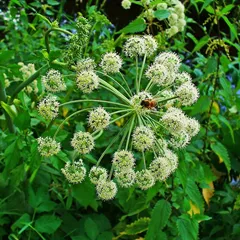
Dang Gui is a king ingredient in Dang Gui Di Huang Yin. Like the name indicates, it means it has more power than other ingredients in the formula.
1. Dong Quai (Dang Gui)
Part used: Dried root
Nature: Warm
Meridian affinity: HeartLiverSpleen
Category: Tonic herbs for Blood Deficiency
In general Dang Gui's main actions are as follows: "Tonifies the Blood. Lubricates the Intestines. Relieve constipation. Promotes circulation and dispels Bi Pain. Reduce Dysmenorrhea and help with irregular menstruation."
In the context of Dang Gui Di Huang Yin, it is used because it nourishes Blood and strengthens the Uterus.

Shu Di huang is a king ingredient in Dang Gui Di Huang Yin. Like the name indicates, it means it has more power than other ingredients in the formula.
2. Prepared Rehmannia (Shu Di huang)
Part used: Prepared dried root tuber
Nature: Warm
Taste(s): Sweet
Meridian affinity: KidneyLiver
Category: Tonic herbs for Blood Deficiency
In general Shu Di huang's main actions are as follows: "Tonifies the Blood. Tonifies the Yin of the Kidneys."
In the context of Dang Gui Di Huang Yin, it is used because it strongly enriches the Kidney Yin and Essence.
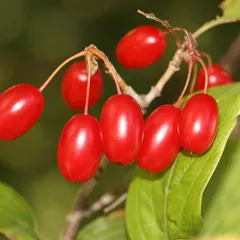
3. Cornelian Cherries (Shan Zhu Yu)
Part used: Dried ripe sarcocarp
Nature: Warm
Taste(s): Sour
Meridian affinity: KidneyLiver
Category: Herbs that stabilize and bind
Shan Zhu Yu nourishes the Liver and restrains the leakage of Essence. It performs the latter function by inhibiting the improper dispersion and drainage through the Liver, thereby enabling the Essence to build up in the Kidneys. For this to occur, a substance with the strong, Essence building properties of the key herb (Shu Di Huang) is also required.
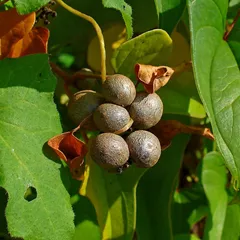
4. Yam (Shan Yao)
Part used: Dried rhizome
Nature: Neutral
Taste(s): Sweet
Meridian affinity: KidneyLungSpleen
Category: Tonic herbs for Qi Deficiency
Shan Yao stabilizes the Essence by tonifying the Spleen. Indeed, to reinforce Essence and improve its function, the Spleen (the source of postnatal Essence) must function properly.
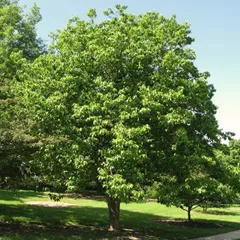
5. Eucommia Bark (Du Zhong)
Part used: Dried stem bark
Nature: Warm
Taste(s): Sweet
Meridian affinity: KidneyLiver
Category: Tonic herbs for Yang Deficiency
In general Du Zhong's main actions are as follows: "Tonifies the Liver and Kidneys. Calms ascendant Liver Yang (hypertension/high blood pressure). Calms a restless fetus."
In the context of Dang Gui Di Huang Yin, it is used because it tonifies and warms Kidney Yang.
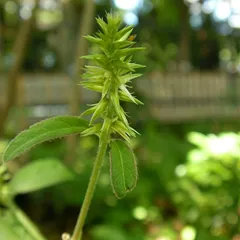
6. Achyranthes Roots (Niu Xi)
Part used: Dried root
Nature: Neutral
Meridian affinity: KidneyLiver
Category: Herbs that invigorate the Blood
In general Niu Xi's main actions are as follows: "Moves Blood and relieves pain in the raw state. Tonic to the Liver and Kidneys and strengthens the bones and sinews. Reduces Damp-Heat in the Lower Burner. Regulates the flow of reckless Blood caused by either ascendant Liver Yang or Yin Deficient Fire."
In the context of Dang Gui Di Huang Yin, it is used because it nourishes the Kidneys and strengthens the back and knees.
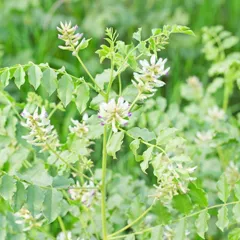
7. Liquorice (Gan Cao)
Part used: Dried root and rhizome
Nature: Neutral
Taste(s): Sweet
Meridian affinity: HeartLungSpleenStomach
Category: Tonic herbs for Qi Deficiency
In general Gan Cao's main actions are as follows: "Tonifies the Basal Qi and nourishes the Spleen Qi. Clears Heat and dispels toxicity. Moistens the Lungsexpel phlegm and stop coughing. Relieves spasms and alleviates pain. Harmonizes and moderates the effects of other herbs."
In the context of Dang Gui Di Huang Yin, it is used because it harmonizes all ingredients.
Conditions and patterns for which Dang Gui Di Huang Yin may be prescribed
It's important to remember that herbal formulas are meant to treat patterns, not "diseases" as understood in Western Medicine. According to Chinese Medicine patterns, which are disruptions to the body as a system, are the underlying root cause for diseases and conditions.
As such Dang Gui Di Huang Yin is used by TCM practitioners to treat three different patterns which we describe below.
But before we delve into these patterns here is an overview of the Western conditions they're commonly associated with:
Menopausal syndrome Scanty menstruation Absence of menstruation
Again it wouldn't be correct to say "Dang Gui Di Huang Yin treats menopausal syndrome" for instance. Rather, Dang Gui Di Huang Yin is used to treat patterns that are sometimes the root cause behind menopausal syndrome.
Now let's look at the three patterns commonly treated with Dang Gui Di Huang Yin.

The Kidneys is a so-called "Zang" Organ. Learn more about the Kidneys in Chinese Medicine
Kidney Yin Deficiency
Pulse type(s): Rapid (Shu), Empty (Xu), Floating (Fu)
Tongue coating: Complete absence of coating
Tongue color: Red
Tongue shape: Cracked
Symptoms: Anxiety Vertigo Itching Sweating Tinnitus Insomnia Dry hair Dry skin Back pain Tiredness Lassitude Dizziness Bone ache Sore back Dry mouth Depression Sore knees Weak knees Dry throat Dry tongue Dry stools Limbs pain Infertility Malar flush Poor memory Constipation Night sweats Little sperm Irritability Restlnessness Five palm heat Scanty periods Blurred vision Lower back pain Evening anxiety Weak lower back Feeling of heat Poor constitution Diminished hearing Nocturnal emissions Hot palms and soles Scanty dark urination Premature ejaculation Menopausal hot flushes Excessive sexual desire White vaginal discharge Dry mouth and throat at night Feeling of heat in the evening Low-grade fever in the afternoon Thirst with desire to drink in small sips
Dang Gui Di Huang Yin is sometimes prescribed by TCM practitioners to treat Kidney Yin Deficiency. This pattern leads to symptoms such as sweating, back pain, diminished hearing and dry mouth and throat at night. Patients with Kidney Yin Deficiency typically exhibit rapid (Shu), empty (Xu) or floating (Fu) pulses as well as Red tongue without coating, cracked in severe cases.
This pattern often accompanies Kidney Essence Deficiency, as Kidney Yin includes Essence. When both element are depleted in the Kidneys, not enough Marrow is generated to fill the Brain, thus the symptoms of dizziness, tinnitus, vertigo and poor memory. The dizziness is mild and the tinnitus is... read more about Kidney Yin Deficiency

The Kidneys is a so-called "Zang" Organ. Learn more about the Kidneys in Chinese Medicine
Kidney-Deficiency
Pulse type(s): Deep (Chen), Weak (Ruo)
Tongue color: Pale
Symptoms: Tinnitus Back pain Knee pain Dizziness Sore back Pale face Cold limbs Weak knees Amenorrhea Late period Malar flush Night sweats Restlessness Scanty periods Feeling of cold Frequent urination Pale menstrual blood Thin and watery periods Feeling of heat in the evening
Dang Gui Di Huang Yin is sometimes prescribed by TCM practitioners to treat Kidney-Deficiency. This pattern leads to symptoms such as scanty periods, pale menstrual blood, back pain and knee pain. Patients with Kidney-Deficiency typically exhibit deep (Chen) or weak (Ruo) pulses as well as a pale tongue.
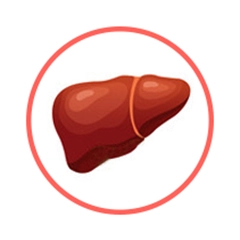
The Liver is a so-called "Zang" Organ. Learn more about the Liver in Chinese Medicine
Liver Blood and Kidney Essence Deficiency
Pulse type(s): Deep (Chen), Weak (Ruo)
Tongue color: Pale
Symptoms: Fatigue Dry skin Knee pain Dizziness Dark face Dry mouth Depression Amenorrhea Low energy Dry throat Night sweats Lower back pain Feeling of cold No menstruation by 18
Dang Gui Di Huang Yin is sometimes prescribed by TCM practitioners to treat Liver Blood and Kidney Essence Deficiency. This pattern leads to symptoms such as no menstruation by 18, lower back pain, fatigue and knee pain. Patients with Liver Blood and Kidney Essence Deficiency typically exhibit deep (Chen) or weak (Ruo) pulses as well as a pale tongue.
Formulas similar to Dang Gui Di Huang Yin
Da Bu Yuan Jian is 75% similar to Dang Gui Di Huang Yin
Da Ying Jian is 71% similar to Dang Gui Di Huang Yin
Tiao Gan Tang is 57% similar to Dang Gui Di Huang Yin
Zuo Gui Yin is 57% similar to Dang Gui Di Huang Yin
You Gui Wan is 50% similar to Dang Gui Di Huang Yin
Gui Shao Di Huang Tang is 50% similar to Dang Gui Di Huang Yin



